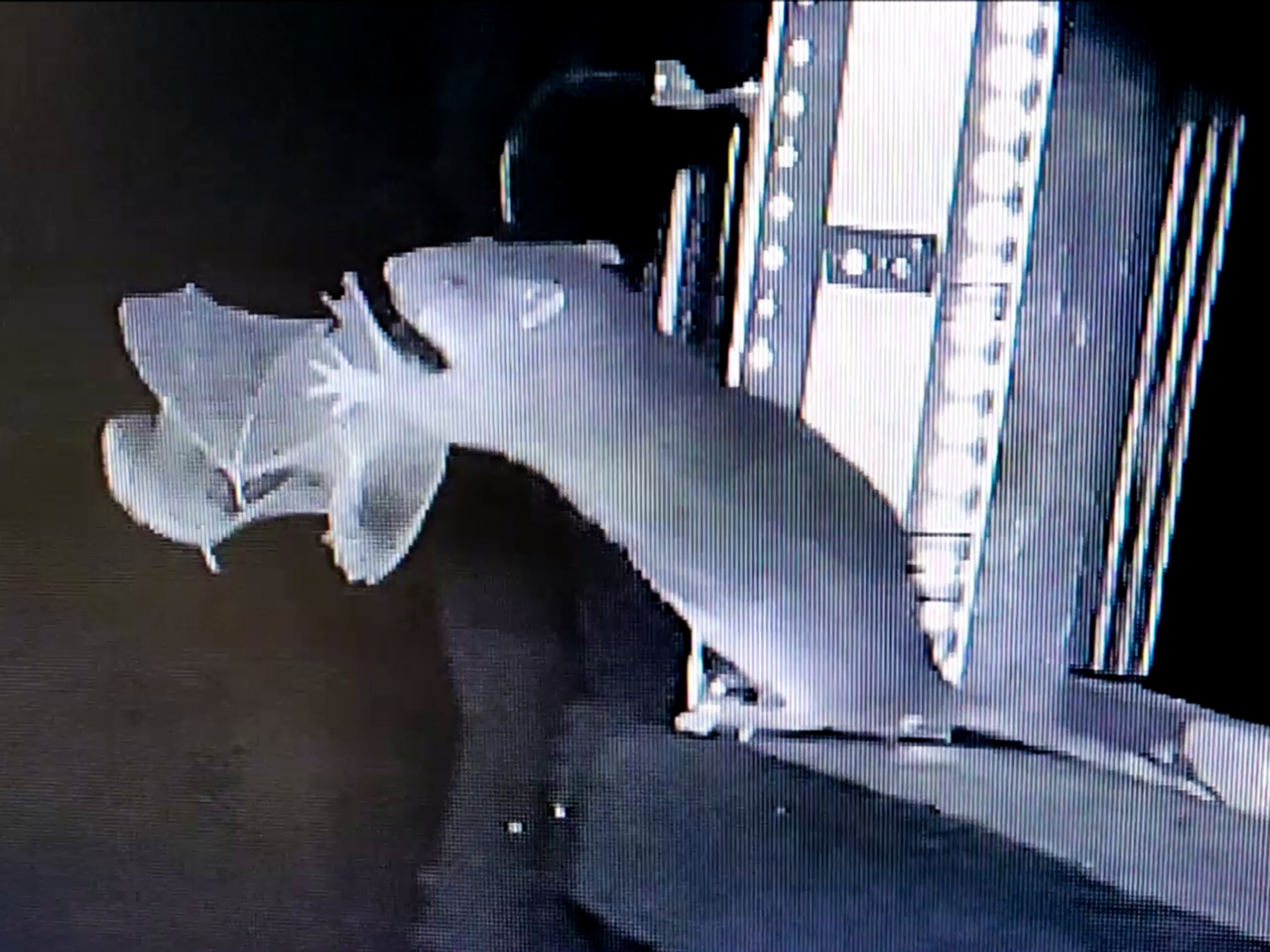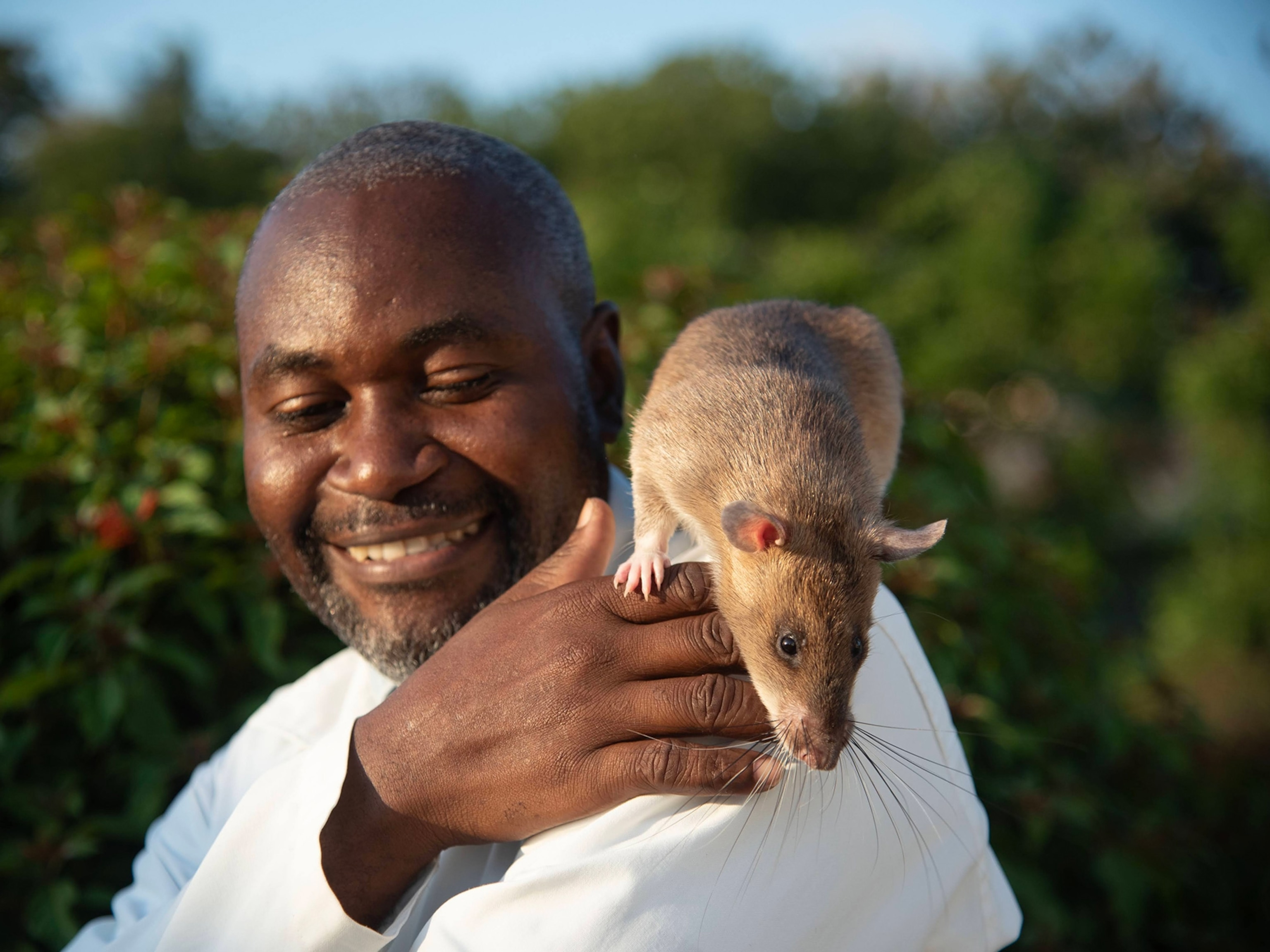Watch a Rat Escape a Snake Attack—In 100 Milliseconds
Kangaroo rats have acrobatic techniques for avoiding venomous sidewinder snakes in California, a new study says.
Tiny kangaroo rats must navigate the California desert at night, when coiled serpents lie in wait for a meal.
But they're not completely helpless: The acrobatic rodents have evolved high-flying techniques to avoid venomous sidewinder snakes, a new study says.
Desert kangaroo rats employ wildly erratic jumps, kicks to the head, rapid foot drumming, and even smack the snakes with a faceful of sand to deter the predators.
"The kangaroo rats perform these really amazing evasive leaps,” says study leader Malachi Whitford, a doctoral student at San Diego State University.
For their study, Whitford and colleagues placed radio transmitters on sidewinders, small rattlesnakes with incredible patience: They'll wait hours or even days for the right meal to walk by. After tracking the reptiles to their hiding spots, the team snuck in and set up night vision cameras nearby. (Read how some snakes gang up to hunt prey.)
In all they recorded 36 interactions between kangaroo rats and sidewinders. Replaying the footage in extreme slow motion showed that a snake went from lying in wait to an attempted bite in about 100 milliseconds. During this short life or death window, the rats had a chance to perceive the snake, react, and jump out of the way.
"Our results were quite striking,” Whitford says, calling it "extreme reaction time."
Formidable Rats
But one thing that wasn’t striking was the sidewinders. Out of 23 attempted lunges, the snakes only hit one kangaroo rat—and it managed to survive.
The rest used massive, unpredictable jumps that sometimes even included kicks to the snake's head with powerful hind legs. (Also see "Watch Snakes Grab Cave Bats From Mid-air.")
“It makes them a formidable opponent against these snakes,” says Whitford, whose study was published in July in the journal Animal Behavior.
Perhaps even more surprising is that if the rats actually noticed the snakes before an ambush, the rodent thwarted the snake every single time with methods similar to those of angry baseball coaches—they kicked sand and stomped their feet in a kind of drumming movement.
Sometimes, Whitford says, the rats kick so much sand they bury the snake completely, forcing the reptile to abandon its post. (See what a rat looks like when it's happy.)
Torture Device
The foot drumming might also let the predator know it's been detected, since the snakes are very sensitive to feeling ground vibrations, notes Peggy Hill, a biologist at the University of Tulsa who wasn't involved in the study.
She notes that kangaroo rats also use these "percussion events"—which humans can't hear without the help of geophones—to communicate with others in their species.
This tactic appeared very effective—the snakes never struck if the rat was aware of its presence. According to Whitford, it's as if the rat says, “Leave or I’m going to keep torturing you."
Whitford isn't sure why the rats are so aggressive toward snakes—rather than just fleeing from them—but it could have to do with keeping their territory free of threats.
Sidewinder snakes often target kangaroo rat burrowing systems, and so expelling a snake from a rat's territory might make it safer for raising young.
Or it may just represent a kind of ratty insurance policy to keep dangerous snakes from catching them in a momentary lapse of attention.
Follow Joshua Rapp Learn on Twitter.





